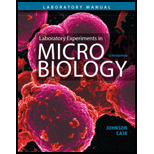
How do agglutination tests detect microbes in a patient’s blood or fluids differ from techniques to detect antibodies to microbes in a patient’s serum?
To analyze:
The difference between the normal immunoassays that detect microbes in patient's serum and agglutination tests detecting microbes in patient's blood or fluids.
Introduction:
Immunoassays:
Immunoassays are techniques that are performed to detect the presence of an antibody in a patient's serum with respect to a known antigen of a pathogen or to detect the presence of a disease causing antigen corresponding to a known antibody.
Latex Agglutination test:
It is a type of agglutination test used to detect the presence of an antigen or an antibody in a patient's body fluids with respect to a particular diseased condition. Examples of body fluids- Blood, Saliva, Urine, Cerebrospinal fluid etc.
Explanation of Solution
ELISA (Enzyme Linked ImmunoSorbent Assay) is one of the widely used Immunoassays that detect the presence of antigen or antibody in a patient's serum. The technique involves coating the well of the microtiter plate with antigen and adding primary antibody (known antibody that binds to the antigen of the pathogen) .The secondary antibody labelled with an enzyme is added to which a chromogenic substrate is introduced. If there is antigen-antibody interaction the colour change of the product produced indicates the endpoint.
Latex Agglutination test or Latex fixation is a technique in which the antigen from the patient's fluid is mixed with antibody coated latex particles. If antigen-antibody interaction is present, then these latex particles gets agglutinated and large lattices formation is seen due. Due to the sedimentation of these large sized lattices, clumps are formed and are visible to naked eye within few minutes. The advantages of using this technique are quick, consistent, uniform and stable results. However getting false results due to interfering substances is a demerit.
Hence the difference between Immunoassays and Latex agglutination test was analysed.
Want to see more full solutions like this?
Chapter 42 Solutions
Laboratory Experiments in Microbiology (12th Edition) (What's New in Microbiology)
- 1. Match each vocabulary term to its best descriptor A. affinity B. efficacy C. inert D. mimic E. how drugs move through body F. how drugs bind Kd Bmax Agonist Antagonist Pharmacokinetics Pharmacodynamicsarrow_forward50 mg dose of a drug is given orally to a patient. The bioavailability of the drug is 0.2. What is the volume of distribution of the drug if the plasma concentration is 1 mg/L? Be sure to provide units.arrow_forwardDetermine Kd and Bmax from the following Scatchard plot. Make sure to include units.arrow_forward
- Choose a catecholamine neurotransmitter and describe/draw the components of the synapse important for its signaling including synthesis, packaging into vesicles, receptors, transporters/degradative enzymes. Describe 2 drugs that can act on this system.arrow_forwardThe following figure is from Caterina et al. The capsaicin receptor: a heat activated ion channel in the pain pathway. Nature, 1997. Black boxes indicate capsaicin, white circles indicate resinferatoxin. a) Which has a higher potency? b) Which is has a higher efficacy? c) What is the approximate Kd of capsaicin in uM? (you can round to the nearest power of 10)arrow_forwardWhat is the rate-limiting-step for serotonin synthesis?arrow_forward
 Human Biology (MindTap Course List)BiologyISBN:9781305112100Author:Cecie Starr, Beverly McMillanPublisher:Cengage LearningEssentials of Pharmacology for Health ProfessionsNursingISBN:9781305441620Author:WOODROWPublisher:Cengage
Human Biology (MindTap Course List)BiologyISBN:9781305112100Author:Cecie Starr, Beverly McMillanPublisher:Cengage LearningEssentials of Pharmacology for Health ProfessionsNursingISBN:9781305441620Author:WOODROWPublisher:Cengage Human Physiology: From Cells to Systems (MindTap ...BiologyISBN:9781285866932Author:Lauralee SherwoodPublisher:Cengage LearningSurgical Tech For Surgical Tech Pos CareHealth & NutritionISBN:9781337648868Author:AssociationPublisher:Cengage
Human Physiology: From Cells to Systems (MindTap ...BiologyISBN:9781285866932Author:Lauralee SherwoodPublisher:Cengage LearningSurgical Tech For Surgical Tech Pos CareHealth & NutritionISBN:9781337648868Author:AssociationPublisher:Cengage





